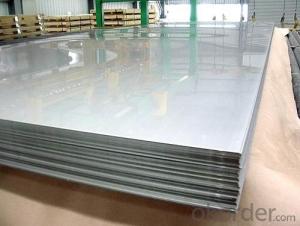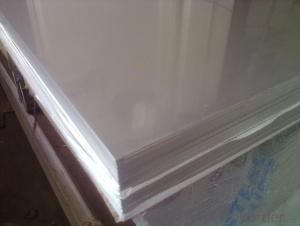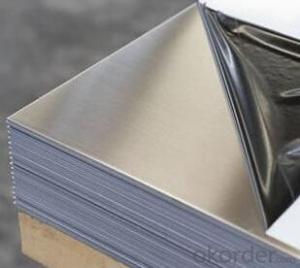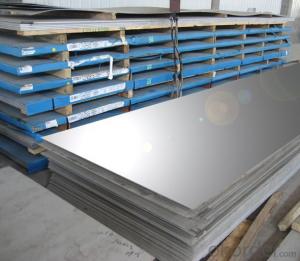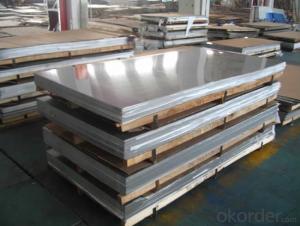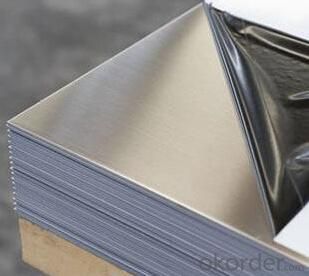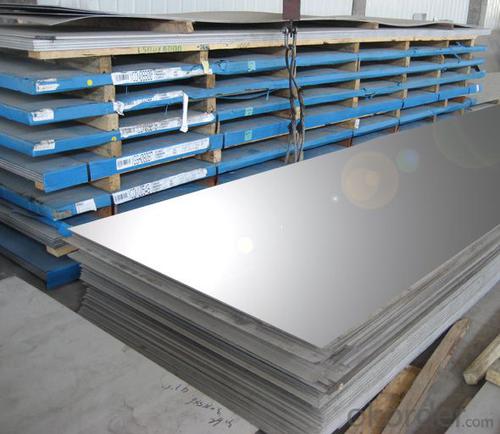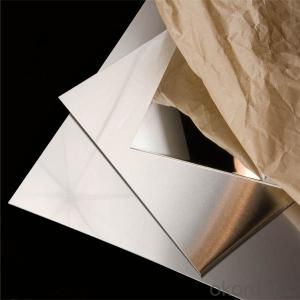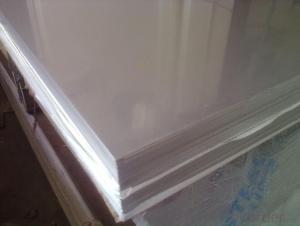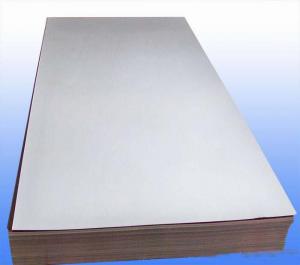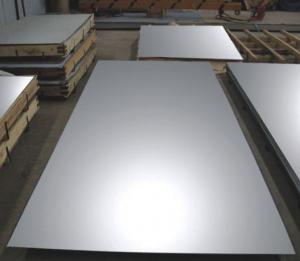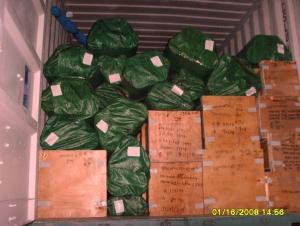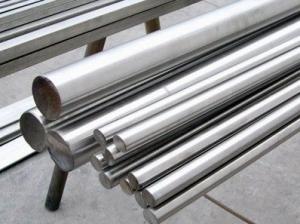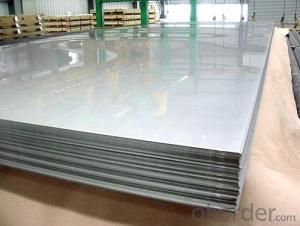Stainless Steel Sheet/Plate 304 for Multi Fields Usage
- Loading Port:
- Shanghai
- Payment Terms:
- TT or LC
- Min Order Qty:
- 1000 m.t.
- Supply Capability:
- 8500000 m.t./month
OKorder Service Pledge
OKorder Financial Service
You Might Also Like
Stainless Steel Sheet/Plate 304 for Multi Fields Usage
Description of Stainless Steel Sheet/Plate 304 for Multi Fields Usage:
Stainless steel is a production which not easy rust,acid resistance and corrosion resistance,so it is widelyused in light industry,heavy industry,daily necessities and the decoration industry.my company long-termsupply stainless steel porducts including:stainless steel sheet,stainless steel coil and stainless steel tube.
Main Features of Stainless Steel Sheet/Plate 304 for Multi Fields Usage:
•Escalator, Elevator, Doors
•Furniture
•Production tools, Kitchen appliances, freezers, cold rooms
•Auto Parts
•Machinery and Packaging
•Equipment and Medical devices
•Transport system
Application of Stainless Steel Sheet/Plate 304 for Multi Fields Usage:
Stainless steel’s resistance to corrosion and staining, low maintenance and familiar lustre make it an ideal material for many application
s.There are over 150 grades of stainless steel, of which fifteen are most commonly used. The alloy is milled into coils, sheets, plates,
bars, wire, and tubing to be used in cookware, cutlery, household hardware, surgical instruments, major appliances, industrial equipme
nt Storage tanks and tankers used to transport orange juice and other food are often made of stainless steel, because of its corrosion re
sistance and antibacterial properties. This also influences its use in commercial kitchens and food processing plants, as it can be steam
cleaned and sterilized and does not need paint or other surface finishes..
Specifications of Stainless Steel Sheet/Plate 304 for Multi Fields Usage:
Description | steel sheet,hot rolled steel sheet,cold rolled steel sheet, steel sheet,sheet,steel plate |
Standard | ASME, ASTM, EN ,BS,GB,DIN, JIS etc |
Application | Steel sheet applies to construction field, ships building industry, petroleum & chemical industries, war and electricity industries, food processing and medical industry, boiler heat exchanger, machinery and hardware fields. |
Packaging | Standard export sea-worthy packing |
Delivery time | 10-30 days |
Quality | No.1 |
Productivity | 500 tons/Day |
Note | Our company has cooperative relation between the domestic agents. Stainless steel sheet can be made accordingto the customers requirements. Fasten delivery. Quality assured. |
Contacts | If you have any question,please feel free contact me. |
Surface Finish Characteristics Stainless Steel Sheet/Plate 304 for Multi Fields Usage:
| Surface finish | Characteristics and application |
| 2B | The surface brightness and flatness of no2B is better than no2D. then through a special surface treatment to improve its mechanical properties,No2B could nearly satisfy comprehensive uses. |
| No.1 | Polished with abrasive belt of grit#100-#200, have better brightness with discontinuous coarse stria, used as inner and external ornaments for building, electrical appliances and kitchen utensils etc. |
| No.4 | Polished with abrasive belt of grit #150-#180,have better brightness with discontinuous coarse stria, but thinner than No3, are used as bathtub buildings inner and external ornaments electrical appliances kitchen utensils and food processing equipment etc. |
| HL | Polished with abrasive belt of grit #150-#320 on the NO.4 finish and has continuous streaks, mainly used as buildings ornaments elevators, door of building, frontal plate etc. |
| BA | Cold rolled, bright annealed and skin-passed, the product have excellent brightness and good reflexivity like mirror, kitchen apparatus, ornament etc. |
| 8K | The product have excellent brightness and prefer reflexivity can to be the mirror. |
Images of Stainless Steel Sheet/Plate 304 for Multi Fields Usage:
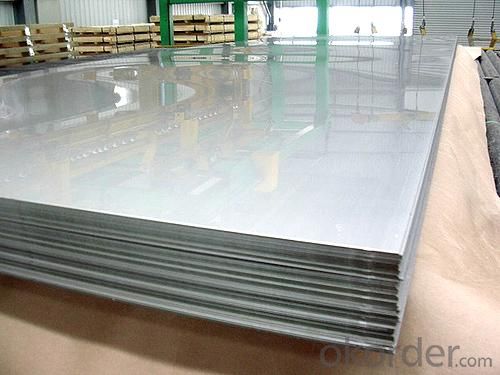
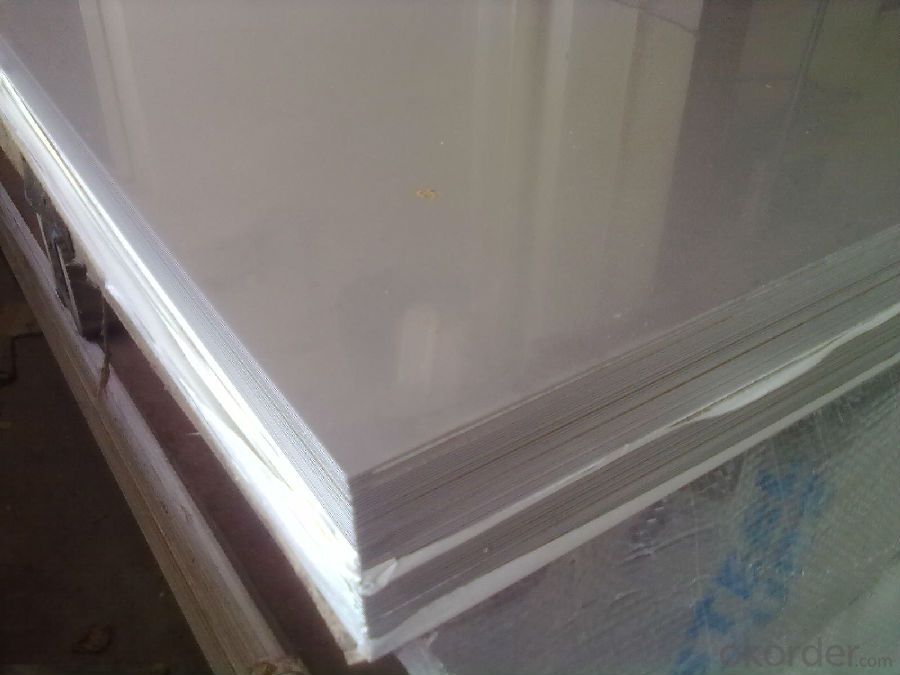

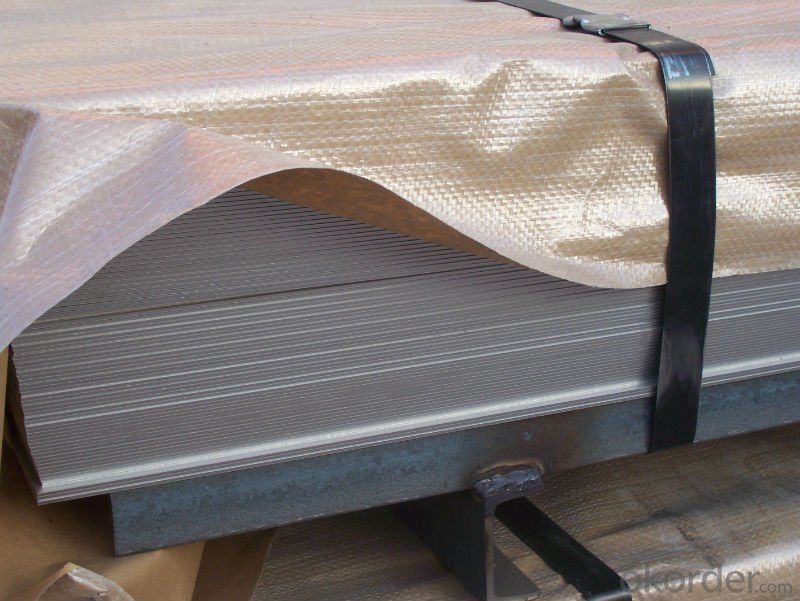
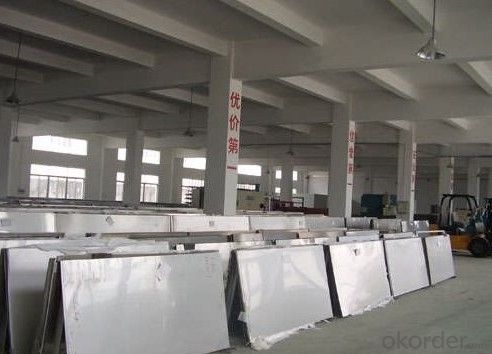
Sandard Seaworth Packing(wooden packing with water proof paper):
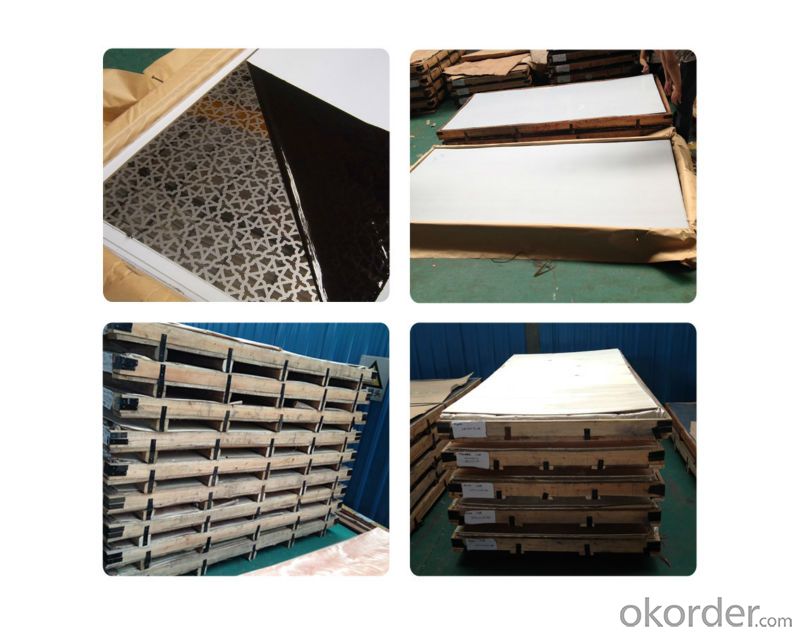
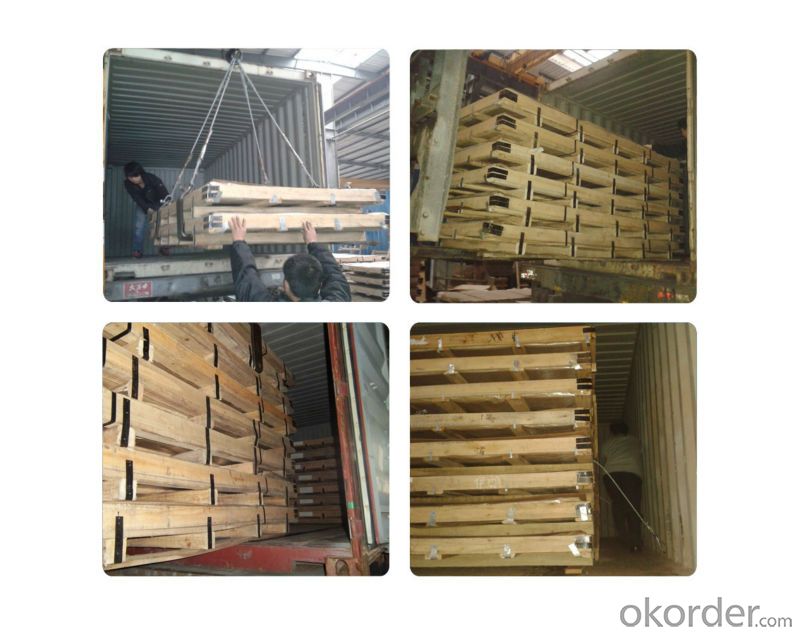
FAQ of Stainless Steel Sheet/Plate 304 for Multi Fields Usage:
1. What are we supplying?
We are specialized in producing stainless steel coil, stainless steel (plate/sheet), and duplex stainless steel for a prelonged period. We are currently supplying grade of steel of 201/202,304/304L, 310S/309S/316L/316Ti/321, 410/420/430/443/444/409L, and 904L.
2. How Many years experience do we have?
We have been exported to more than 20 countries in the past 15 years.
3. How long do we usually reply your request?
We always reply our customer within 24 hours.
If you have any question about stainless steel sheets,donot forget to sending the email to Us! You will get the competitive Price and have a very good experience about the Buying Process! CNBM International Corporation is always your trustful friend!
- Q: What are the limitations of using stainless steel sheets?
- Some limitations of using stainless steel sheets include their high initial cost, susceptibility to scratching, potential for corrosion in certain environments, and difficulty in shaping complex designs. Additionally, stainless steel sheets are relatively heavy, which can be a disadvantage in certain applications where weight is a concern.
- Q: What are stainless steel sheets made of?
- Stainless steel sheets are made from a type of steel alloy that contains a minimum of 10.5% chromium. The addition of chromium creates a protective layer on the surface of the steel called a passive film, which makes stainless steel resistant to corrosion and staining. In addition to chromium, stainless steel sheets may also contain other elements such as nickel, molybdenum, and nitrogen, which enhance its mechanical properties and corrosion resistance. The specific composition of stainless steel sheets can vary depending on the desired properties and applications.
- Q: Can stainless steel sheets be used for heat recovery systems?
- Heat recovery systems can utilize stainless steel sheets. Stainless steel is known for its high thermal conductivity and corrosion resistance, making it an ideal material for heat transfer applications. In heat recovery systems, stainless steel sheets are commonly employed as heat exchanger plates or tubes because they efficiently transfer heat from one fluid to another. The corrosion resistance of stainless steel guarantees the durability and reliability of the heat recovery system, even in harsh environments and at elevated temperatures. Furthermore, stainless steel sheets can withstand thermal expansion and contraction, enabling their use in different heat recovery system designs. Overall, stainless steel sheets are a favored option in heat recovery systems due to their exceptional heat transfer properties, long-lasting nature, and resistance to corrosion.
- Q: How do you restore the shine or finish on stainless steel sheets?
- To regain the luster or polish on stainless steel sheets, there are several approaches you can attempt: 1. Warm water and soap cleanse: Initiate the process by washing the stainless steel sheets with warm water and a mild dish soap. Employ a soft cloth or sponge to delicately scrub the surface, then rinse it with clean water and meticulously dry it with a clean cloth. This procedure should eliminate any dirt or grime that is dimming the shine. 2. Vinegar solution: In case the stainless steel sheets possess obstinate stains or lackluster spots, you can experiment with a vinegar solution. Combine equal parts of white vinegar and water in a spray bottle, then spritz the solution onto the surface. Allow it to sit for a few minutes, then wipe it away with a soft cloth. Vinegar aids in stain removal and rejuvenates the shine of stainless steel. 3. Baking soda paste: For more stubborn stains or scratches on the stainless steel sheets, you can concoct a paste using baking soda and water. Blend an ample amount of baking soda with water until a thick paste forms, then apply it to the stained areas. Gently scrub the surface with a soft cloth or sponge, moving in the direction of the grain. Rinse with water and meticulously dry it. 4. Stainless steel cleaner: There are commercially available stainless steel cleaners that are specifically formulated to restore the shine and finish of stainless steel. Adhere to the instructions on the cleaner and administer it to the surface using a soft cloth or sponge. Gently rub in the direction of the grain and rinse with water. To prevent water spots, ensure thorough drying. Always remember to test any cleaning method or solution on a small, inconspicuous area of the stainless steel sheet before applying it to the entire surface. This precaution will help ensure that the method or solution does not cause any damage or discoloration.
- Q: How do you remove fingerprints from brushed stainless steel sheets?
- To remove fingerprints from brushed stainless steel sheets, you can follow these simple steps: 1. Start by gathering the necessary cleaning supplies. You will need a microfiber cloth, mild dish soap, warm water, and a stainless steel cleaner or vinegar. 2. Begin by dampening the microfiber cloth with warm water. Make sure the cloth is not soaking wet, just slightly damp. 3. Gently wipe the stainless steel surface in the direction of the grain. It is important to always follow the grain to avoid causing scratches or streaks. 4. If the fingerprints persist, you can add a small amount of mild dish soap to the damp cloth and continue wiping the surface. Be sure to rinse the cloth thoroughly after applying the soap. 5. If the fingerprints are still visible, you can use a stainless steel cleaner specifically designed for brushed stainless steel surfaces. Apply a small amount of the cleaner onto the microfiber cloth and wipe the surface in the direction of the grain. Remember to follow the manufacturer's instructions for the specific cleaner you are using. 6. Alternatively, you can use white vinegar as a natural cleaning solution. Dampen a cloth with vinegar and gently wipe the surface in the direction of the grain. Vinegar can help remove fingerprints and restore shine. 7. Once you have removed the fingerprints, use a dry microfiber cloth to buff the surface gently. This will help remove any remaining streaks and give the stainless steel a polished finish. Remember to always test any cleaning solution on a small, inconspicuous area of the stainless steel sheet before applying it to the entire surface. Additionally, avoid using abrasive materials or cleaners that contain chlorine or bleach, as they can damage the brushed finish of the stainless steel.
- Q: Can stainless steel sheets be used for roofing or cladding?
- Certainly! Roofing or cladding can definitely utilize stainless steel sheets. Stainless steel, being a durable and resistant material, is perfectly suitable for exterior purposes. It provides exceptional strength and can endure severe weather, thus making it an ideal option for roofing or cladding. On top of that, stainless steel presents a sleek and contemporary look that can enhance a building's aesthetic charm. Moreover, its long-lasting nature and minimal maintenance needs make it a cost-effective choice in the long term. All in all, stainless steel sheets are a dependable and adaptable option for roofing or cladding ventures.
- Q: What are the common methods of cutting stainless steel sheets?
- The common methods of cutting stainless steel sheets include shearing, laser cutting, plasma cutting, and waterjet cutting.
- Q: Can stainless steel sheets be used for oil and gas pipelines?
- Indeed, oil and gas pipelines can utilize stainless steel sheets. The oil and gas industry frequently relies on stainless steel because it possesses remarkable resistance against corrosion. It can endure the demanding circumstances involved in the transportation and storage of oil and gas, encompassing high pressure, high temperature, and corrosive surroundings. When constructing pipeline components like pipes, fittings, and flanges, stainless steel sheets are commonly employed. They provide longevity, robustness, and the ability to resist corrosion, thereby aiding in leak prevention and the preservation of pipeline integrity.
- Q: What is the difference between 304 and 316 stainless steel sheets?
- 304 and 316 stainless steel sheets are both popular choices for a wide range of applications due to their excellent corrosion resistance and durability. However, there are some key differences between the two. Firstly, the most noticeable distinction is the composition of these stainless steel alloys. 304 stainless steel contains 18% chromium and 8% nickel, while 316 stainless steel contains 16% chromium, 10% nickel, and 2% molybdenum. This additional molybdenum in 316 stainless steel provides enhanced resistance to corrosion, especially in chloride-rich environments such as marine or coastal areas. Therefore, 316 stainless steel is often preferred for applications where exposure to harsh conditions or corrosive chemicals is expected. Secondly, the higher nickel and molybdenum content in 316 stainless steel make it more resistant to pitting and crevice corrosion, which can occur in stagnant or low-oxygen environments. This makes 316 stainless steel a better choice for applications involving prolonged exposure to acidic or alkaline solutions, such as chemical processing plants or medical equipment. Thirdly, the higher molybdenum content in 316 stainless steel also improves its resistance to high temperatures. It can withstand higher temperatures than 304 stainless steel, making it suitable for applications involving heat exposure, such as exhaust systems or boilers. Lastly, 316 stainless steel is generally more expensive than 304 stainless steel due to its higher alloy content. However, the added benefits and increased corrosion resistance of 316 stainless steel may justify the higher cost in certain applications where performance and longevity are crucial. In summary, while both 304 and 316 stainless steel sheets offer excellent corrosion resistance, 316 stainless steel provides superior resistance to harsh environments, acidic or alkaline solutions, and higher temperatures due to its higher nickel, chromium, and molybdenum content. The choice between the two will depend on the specific application and the level of corrosion resistance required.
- Q: Can stainless steel sheets be used for heat shields?
- Certainly! Heat shields can indeed utilize stainless steel sheets. Renowned for their exceptional heat resistance and durability, stainless steel proves to be an outstanding option for safeguarding against heat transfer. By effectively deflecting radiant, convective, and conductive heat, stainless steel sheets are well-suited for an array of purposes, encompassing automotive heat shields, industrial machinery, and household appliances. Moreover, their corrosion resistance and effortless maintenance render stainless steel sheets a pragmatic and enduring selection for heat shield implementations.
Send your message to us
Stainless Steel Sheet/Plate 304 for Multi Fields Usage
- Loading Port:
- Shanghai
- Payment Terms:
- TT or LC
- Min Order Qty:
- 1000 m.t.
- Supply Capability:
- 8500000 m.t./month
OKorder Service Pledge
OKorder Financial Service
Similar products
Hot products
Hot Searches
Related keywords
